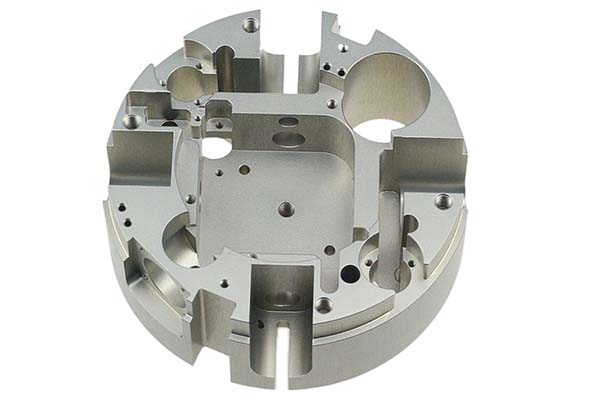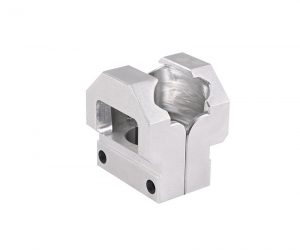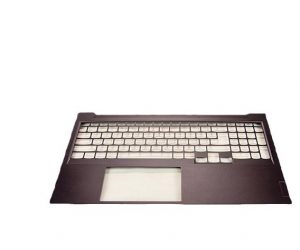1. Introduction: The Paradigm Shift in Mold Cooling
1.1 The Critical Role of Cooling in Injection Molding
In the realm of injection molding, cooling is not just a secondary process; it is the linchpin that holds together the twin goals of high - production efficiency and top - notch part quality. A staggering 40 - 70% of the total cycle time in injection molding is attributed to the cooling phase. This means that any inefficiencies in cooling can significantly elongate the time it takes to produce each part, directly hitting the bottom line of production throughput.
Consider a high - volume production line manufacturing plastic consumer goods. If the total cycle time for each part is 60 seconds and the cooling time accounts for 60% of this, that's 36 seconds dedicated solely to cooling. Reducing the cooling time by even a few seconds can lead to a substantial increase in the number of parts produced per day, week, or month.
Moreover, the quality of the final part is intricately linked to the cooling process. Traditional linear cooling channels, which are typically drilled straight through the mold, are a relic of a bygone era in terms of design flexibility. In complex part geometries, these linear channels are like a one - size - fits - all solution trying to fit a diverse range of shapes. They often result in uneven temperature distribution within the mold. For Yigu Technology example, in a mold with a thick - walled section and a thin - walled section adjacent to each other, a linear cooling channel may cool the thin - walled section too quickly while the thick - walled section remains relatively hot. This temperature differential can cause the part to experience internal stresses as it cools and solidifies. Over time, these stresses can lead to defects such as warpage, where the part takes on an unintended, distorted shape, or sink marks, which are small depressions on the surface of the part. These defects not only reduce the aesthetic appeal of the product but can also render it functionally defective, leading to increased scrap rates and production costs.
2. Technical Foundations of Conformal Cooling
2.1 Additive Manufacturing Techniques for Channel Design
Additive manufacturing (AM) has emerged as a game - changer in the creation of conformal cooling channels. Selective laser melting (SLM) and fused deposition modeling (FDM) are two of the most prominent AM techniques used in this context, each with its own set of advantages and applications.
Selective Laser Melting (SLM)
SLM is a powder - bed fusion process. In SLM, a high - power laser is used to selectively melt metal powder layer by layer. This allows for the creation of highly complex geometries with a high degree of precision. For conformal cooling channels, SLM can produce channels with diameters as small as 1mm. The ability to create such small - diameter channels is crucial as it enables a more efficient heat transfer. Smaller channels can have a larger surface - area - to - volume ratio, which means that more heat can be transferred from the mold to the coolant in a given volume.
For example, in the manufacturing of a mold for a complex automotive interior part with many undercuts and intricate features, SLM - produced conformal cooling channels can be designed to closely follow the contours of the part. These channels can maintain a uniform heat extraction rate across the entire mold surface, including those hard - to - reach undercut areas. This results in a more evenly cooled part, reducing the likelihood of warping and other defects.
The following Yigu Technology table summarizes the key features of SLM and FDM for conformal cooling channel design:
| AM Technique | Channel Diameter Range | Material Types | Complexity of Geometry |
| Selective Laser Melting (SLM) | As small as 1mm | Metals (e.g., stainless steel, aluminum alloys) | High - can create highly complex channels following intricate part contours |
| Fused Deposition Modeling (FDM) | Larger range, typically starting from a few mm | Thermoplastics (and some filled composites) | Moderate - can create channels with good adaptability to part shape |
2.2 Material Considerations for Optimal Performance
The choice of material for the mold and the conformal cooling channels is as critical as the design of the channels themselves. Different materials offer different combinations of thermal conductivity, corrosion resistance, and other properties that can significantly impact the performance of the conformal cooling system.
Rame Alloys
Rame alloys are highly prized for their exceptional thermal conductivity, with a value of around 385 W/m·K. This high thermal conductivity ensures that heat is rapidly dissipated from the mold. In applications where speed of cooling is of the essence, such as high - volume production of simple plastic parts like bottle caps, copper - alloy molds with conformal cooling channels can reduce the cooling time substantially. The rapid heat transfer ability of copper alloys allows for a more efficient transfer of heat from the molten plastic to the coolant flowing through the channels. However, copper alloys can be relatively soft and may not be suitable for molds that need to withstand high mechanical stresses.
Stainless steel strikes a balance between corrosion resistance and thermal efficiency. In injection molding processes that involve aggressive polymers or when the mold is exposed to harsh operating environments, the corrosion - resistant properties of stainless steel are invaluable. For Yigu Technology example, when molding parts from polyvinyl chloride (PVC), which can release corrosive gases during the molding process, a stainless - steel mold with conformal cooling channels will have a longer lifespan compared to other materials. While the thermal conductivity of stainless steel is lower than that of copper alloys (around 16 - 24 W/m·K depending on the alloy), proper design of the cooling channels can still achieve effective cooling. The use of advanced AM techniques can create intricate channel designs in stainless steel molds to maximize heat transfer despite the lower thermal conductivity.
Hybrid Composites
Hybrid composites, such as aluminum - filled epoxies, are becoming increasingly popular for certain applications. These materials combine the lightweight properties of polymers with improved thermal management due to the addition of thermally conductive fillers like aluminum. In applications where weight is a concern, such as in the aerospace industry for manufacturing small plastic components for aircraft interiors, hybrid composite molds with conformal cooling channels can offer a good solution. The aluminum particles in the epoxy matrix enhance the thermal conductivity of the composite, allowing for efficient heat transfer, while the epoxy provides the necessary structural integrity. The Yigu Technology table below compares the key properties of these materials:
| Material | Thermal Conductivity (W/m·K) | Corrosion Resistance | Mechanical Strength |
| Copper Alloys | 385 | Low - susceptible to corrosion in some environments | Moderate - relatively soft |
| Acciaio inossidabile | 16 - 24 | High | High |
| Aluminum - filled Epoxies | Varies (improved over pure epoxy, depending on filler content) | Moderate | Moderate - depends on epoxy matrix |
3. Performance Comparison: Conformal Cooling vs. Traditional Methods
A side - by - side comparison between conformal cooling and traditional cooling methods reveals stark differences in performance across multiple key parameters, as detailed in the following Yigu Technology table:
| Parameter | Conformal Cooling | Traditional Cooling |
| Cooling Uniformity | ±2°C | ±10°C |
| Cycle Time Reduction | 20–40% | 0–10% |
| Part Warpage | <0.1mm/m | 0.3–0.5mm/m |
| Surface Finish (Ra) | 0.8–1.6μm | 1.6–3.2μm |
| Material Waste | <10% | 30–70% |
3.1 Cooling Uniformity
The ability to achieve a uniform temperature distribution within the mold is a cornerstone of high - quality injection molding. Conformal cooling channels, with their ability to closely follow the part's geometry, are far superior in this regard. In a study on the molding of a complex - shaped plastic housing for a consumer electronics device, traditional linear cooling channels resulted in a temperature variation of up to ±10°C across the mold surface. This large temperature differential led to significant internal stresses in the part as it cooled. In contrast, the conformal cooling channels maintained a much more consistent temperature, with a variation of only ±2°C. This uniform cooling reduced the internal stresses, resulting in a part with better dimensional stability and fewer defects.
3.2 Cycle Time Reduction
Cycle time is a critical factor in injection molding, directly impacting production throughput and cost - effectiveness. Conformal cooling has been shown to reduce cycle times by 20 - 40% in many applications. For Yigu Technology example, in a high - volume production of plastic bottle caps, a company that switched from traditional cooling to conformal cooling saw a reduction in the cycle time from 15 seconds to 9 seconds. This 40% reduction was due to the more efficient heat transfer enabled by the conformal cooling channels. The faster cooling meant that the plastic solidified more quickly, allowing the part to be ejected from the mold earlier. In contrast, traditional cooling methods, which have limited ability to target specific hotspots in the mold, typically achieve a cycle - time reduction of only 0 - 10%.
3.3 Part Warpage
Part warpage is a common defect in injection molding that can render a part unusable. Traditional cooling methods often struggle to cool all parts of a mold evenly, leading to uneven shrinkage and warpage. The data shows that parts produced with traditional cooling methods can experience warpage of 0.3 - 0.5mm/m. In a case study of a large - scale automotive interior component, traditional cooling channels caused the part to warp significantly, requiring extensive post - processing to correct the shape. With conformal cooling, the warpage was reduced to less than 0.1mm/m. The conformal cooling channels ensured that the heat was removed uniformly from the mold, minimizing the differential shrinkage that causes warpage. This not only improved the quality of the part but also reduced the need for costly post - processing operations.
3.4 Surface Finish
The surface finish of the molded part is an important aesthetic and functional consideration. Conformal cooling contributes to a better surface finish. In a comparison of parts produced with traditional and conformal cooling for a high - end consumer product, the surface roughness (Ra) of parts produced with traditional cooling was in the range of 1.6 - 3.2μm. The uneven cooling led to surface irregularities as the plastic solidified at different rates in different areas. In contrast, parts produced with conformal cooling had a surface roughness of 0.8 - 1.6μm. The more uniform cooling provided by conformal cooling channels allowed the plastic to solidify more evenly, resulting in a smoother surface finish. This is particularly important for products where a high - quality surface appearance is crucial, such as in luxury consumer goods or precision - engineered components.
3.5 Material Waste
Material waste is a significant cost factor in injection molding. Traditional cooling methods often require excessive material removal during the machining process to create the linear cooling channels. This can result in material waste of 30 - 70%. In the production of a metal mold for a large - scale industrial application, traditional machining methods for creating cooling channels led to the removal of a large amount of material, increasing the cost of the mold. Additive manufacturing - enabled conformal cooling, on the other hand, builds the mold layer by layer, allowing for the creation of complex cooling channels without the need for extensive material removal. As a result, material waste can be reduced to less than 10%. This not only saves on material costs but also reduces the environmental impact associated with the disposal of excess material.
4. Breakthrough Applications in Key Industries
4.1 Automotive Component Production
The automotive industry is one of the early adopters and major beneficiaries of conformal cooling in additive manufacturing. A 2023 study by Volkswagen, a leading automotive manufacturer, provides compelling evidence of the technology's impact. In the production of bumper brackets, which are large and complex plastic components, the use of conformal - cooled molds led to remarkable improvements.
The cycle time, a crucial factor in high - volume automotive production, was reduced by 35%. In a typical automotive production line, where thousands of parts are produced daily, this reduction in cycle time can significantly increase the number of parts produced per day, leading to substantial cost savings in terms of labor and equipment utilization. For Yigu Technology example, if a production line was previously producing 1000 bumper brackets per day with a cycle time of 60 seconds, after implementing conformal cooling, the cycle time is reduced to 39 seconds. This would potentially allow the production line to produce over 1500 parts per day, assuming all other factors remain constant.
The scrap rate, which is a major cost driver in automotive manufacturing, was slashed by 60%. The optimized cooling provided by conformal cooling channels eliminated hotspots in the polypropylene parts. Hotspots are areas in the mold where the plastic cools more slowly, leading to uneven shrinkage and potential defects. By ensuring a more uniform cooling process, the dimensional stability of the bumper brackets was greatly improved. This means that parts are more likely to meet the strict quality standards required in the automotive industry, reducing the need for costly rework or scrapping of defective parts.
4.2 Medical Device Manufacturing
In the highly regulated and precision - driven medical device manufacturing industry, conformal cooling in additive - manufactured molds is making significant inroads. Stryker, a well - known medical technology company, uses conformal cooling in AM - printed titanium orthopedic molds.
The cooling of polyethylene implants, which are used in orthopedic procedures, was achieved 40% faster with conformal cooling. This is crucial in medical device manufacturing, where the production process needs to be as efficient as possible without sacrificing quality. Faster cooling means that the production rate of these implants can be increased, potentially making them more accessible to patients.
Moreover, the reduced cooling time also reduces the residual stress in the implants. Residual stress can affect the long - term performance of the implant, especially in terms of osseointegration, which is the process by which the implant fuses with the surrounding bone tissue. With conformal cooling, the osseointegration rates were enhanced by 25%. This improvement can lead to better patient outcomes, as implants that integrate more effectively with the bone are less likely to loosen or fail over time.
4.3 Aerospace Composite Tooling
The aerospace industry, with its stringent requirements for lightweight materials and Yigu Technology high - precision components, has also found great value in conformal cooling. Boeing, a global aerospace giant, has been at the forefront of implementing this technology in its carbon - fiber layup molds.
The curing time of carbon - fiber components, which is a time - consuming process in aerospace manufacturing, was cut in half, by 50%. Carbon - fiber parts are used extensively in aircraft for their high strength - to - weight ratio. However, the curing process, which involves heating the carbon - fiber composite to a specific temperature for a certain period to harden the resin, can be very time - consuming. Reducing the curing time not only increases the production efficiency but also allows for more rapid development and production of new aircraft components.
Despite the significant reduction in curing time, Boeing's conformal - cooled molds maintained a precision of ±0.05mm. This high level of precision is essential in aerospace, where even the slightest deviation in the dimensions of a component can have serious consequences for the performance and safety of the aircraft. Additionally, the use of conformal cooling enabled a 20% weight reduction in aircraft interior components. Weight reduction is a key goal in aerospace design, as it can lead to improved fuel efficiency and reduced operating costs. By using conformal cooling to optimize the design of the molds, Boeing was able to produce lighter yet still structurally sound interior components.
FAQ
Q1: How does conformal cooling affect mold lifespan?
A: Uniform cooling reduces thermal stress, extending mold life by 30–50% compared to traditional methods.
Q2: Can conformal cooling be integrated with existing molds?
A: Yes. Hybrid manufacturing combines AM - printed conformal inserts with conventional mold bases, offering a cost - effective upgrade.
Q3: Which industries benefit most from conformal cooling in additive manufacturing?
A: Automotive, medical, and aerospace sectors gain significant advantages due to their demands for high - volume, high - precision parts. This structured approach integrates technical data, case studies, and forward - looking insights to position conformal cooling as a transformative force in additive manufacturing, balancing innovation with practical application.


